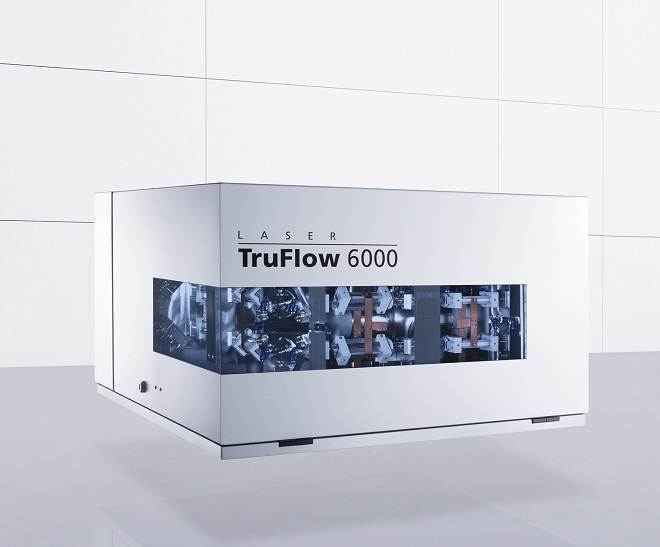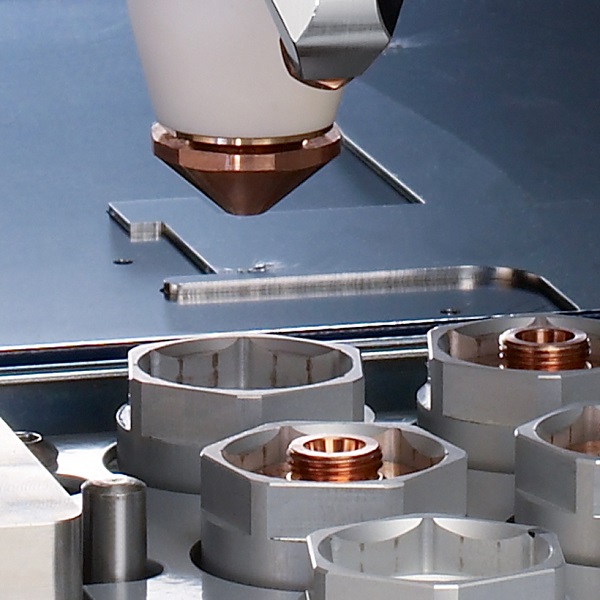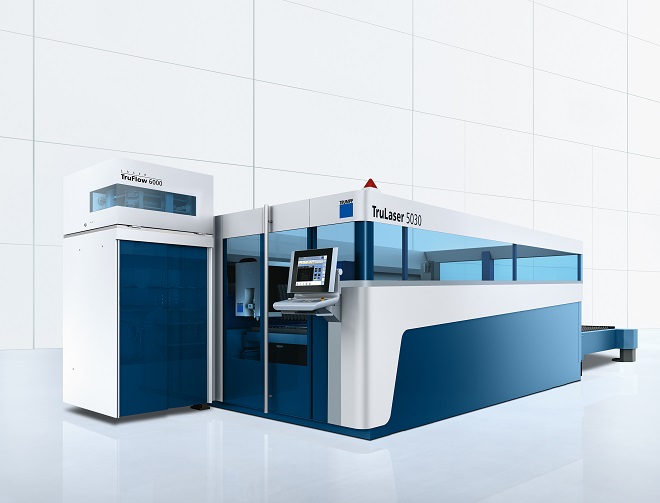Ditzingen, November 5, 2013 – Maximum efficiency and edge quality with a CO2 laser – that is what the TruLaser 5030 offers. TRUMPF is presenting this global first at the Blechexpo 2013 international trade fair in Stuttgart. The laser machine is available with either a 6- or 8-kilowatt laser. It cuts mild steel up to a thickness of 25, stainless steel up to a thickness of 50, and aluminum up to a thickness of 25 millimeters. Also available as of the Blechexpo trade fair is the TruLaser 5040, a variant of the machine that processes large sheets up to 4,000 x 2,000 millimeters in size.
The machines are ideally suited to productive all-purpose cutting, as they deliver optimum component quality and top productivity for all sheet thicknesses. On top of this, a particularly energy-efficient CO2 laser reduces operating costs, while new intelligent functions increase process reliability in fully automatic operation and minimize non-productive times.

TruFlow Laser
Top quality and lower operating costs
Improvements to the cooling system have increased the efficiency of TruFlow lasers. The new cooling concept is largely free of compressors, which consume power, and permits direct heat exchange between hot cooling water and the ambient air. That reduces energy consumption by around 30 percent and makes TRUMPF’s CO2 lasers the most energy-efficient of their kind – ensuring the tried-and-tested CO2 laser remains an attractive tool for all-purpose 2D laser processing.
Additional technological advances further enhance the attractiveness of the new TruLaser 5030. One example is the unprecedented component quality it achieves. This is especially true for cutting stainless steel in a thickness range between eight and 15 millimeters using the BrightLine function, where the edge appearance obtained is similar to that of a milled part. And the machine also greatly exceeds the market standard in all its other applications. It achieves good cutting quality in thicker mild steel using the CoolLine function – even with poorer quality materials – and also enables narrower ribs. A new multi-stage piercing process prevents slag from forming at the piercing point and reduces bore diameters to just two millimeters in 15-millimeter thick sheets. In this way, the new process permits even smaller minimum contours while increasing process reliability.

Smart Nozzle Automation
Maximum process reliability and minimized non-productive times
The TruLaser 5030 also has additional functions to ensure the reliability of manufacturing processes. The new smart nozzle automation option contains a new nozzle inspection, a nozzle changer, an automatic beam alignment, and LensLine with condition checking. This enables the machine to detect damaged nozzles or dirty lenses and react autonomously. For example, it can replace the nozzle or notify the machine operator when a lens needs to be cleaned. On top of this, a unit on the nozzle changer centers the beam and DetectLine adjusts the focal position.
Consequently, the TruLaser 5030 offers automated solutions for many factors that can affect cutting results. The machine carries out all adjustment tasks to the lens and nozzle automatically, while remaining manual jobs such as setting up the nozzle changer are easy to plan thanks to component status display. All this means that smart nozzle automation increases the machine’s process reliability while reducing non-productive times. As a result, it facilitates fully automatic operation, especially during night and weekend shifts.
Simultaneous cutting head positioning boosts the productivity of the new machine. Positioning distances for complex contours can be much shorter with the TruLaser 5030 because an extra control module plans the routes in advance. In addition, the machine’s dynamic linear and gantry direct drives allow it to achieve simultaneous axis speeds of 300 meters a minute.












